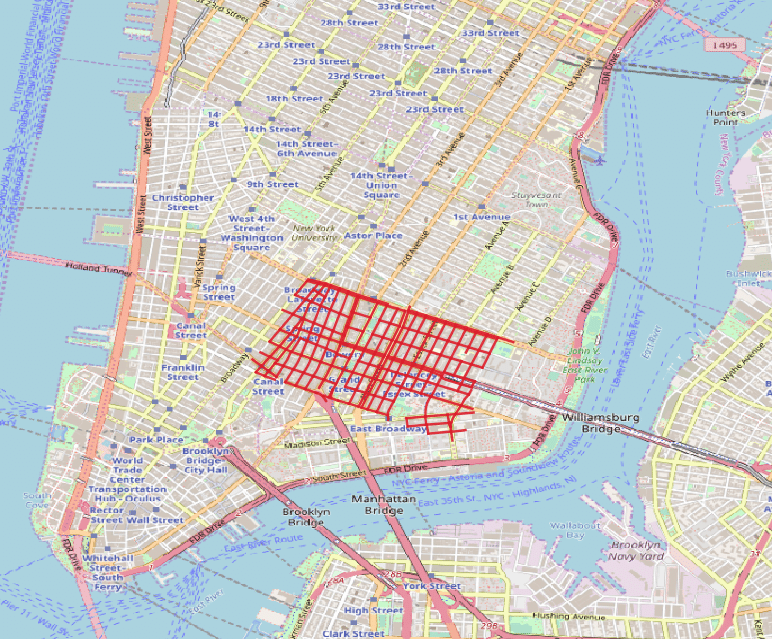
The odyssey of finding a parking space after arriving at a destination is one of the great frustrations of driving, and is a major contributor to urban congestion. INRIX parking analytics, drawing on historical availability rates, can effectively predict the probability of finding a space an any given block in a city.
The ability to find a spot, or lack thereof, can indicate whether parking regulations are working as intended and if changes are needed for a well-functioning market. Frequently, the prevalence of free or underpriced parking results in acute shortages.
This analysis looks at parking probability by time of day and day of week in lower Manhattan. From this analysis, clear trends emerge, indicating demand for a tailored approach to realize efficient on street parking conditions. The goal of parking regulations should be to guarantee space availability in order to prevent unnecessary ‘cruising’ for spaces and provide drivers with predictable trip times.
Area of Study
The below table reveals the probability of finding an open space amongst more than 5100 spaces, depending upon the time of day and day of week. Roughly 2000 are paid spaces versus 3100 free.
Probability of Finding a Space
| Day | 12:00 AM | 8:00 AM | 12:00 PM | 4:00 PM | 8:00 PM |
| Wednesday | 67% | 45% | 30% | 47% | 46% |
| Friday | 70% | 48% | 32% | 45% | 32% |
| Saturday | 67% | 52% | 34% | 37% | 25% |
Unsurprisingly, street parking in lower Manhattan is very difficult during most hours of the day. However, the difficulty of finding spaces Friday and Saturday evenings versus Wednesday, a ‘normal’ weekday, stands out.
Within the area studied, paid spaces cost $4.00 for the first hour and $6.75 for the second hour. While there is a positive correlation between the presence of paid spaces and likelihood of finding a space, the very low likelihood of finding a space indicates the rates are set too low.
Although the inability to find a space itself is an inconvenience – and more importantly, contributing to traffic, lost time, and increased pollution – the presence of both free and paid spaces means drivers will likely forego available pay spaces, instead loitering to find an open free space. While they may save in terms of parking fees, the presence of cars on the road incurs costs. To guarantee availability, and prevent unnecessary ‘cruising,’ a reconsideration of the prevalence of free spaces and pricing is necessary.




